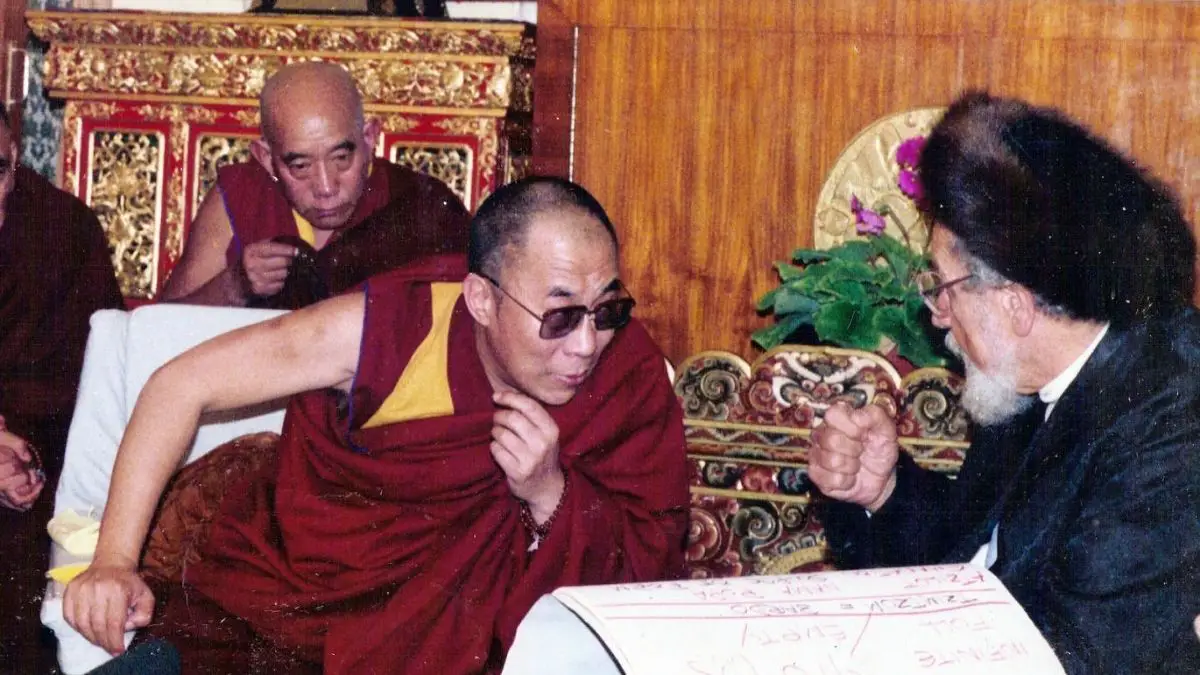There are so many similarities between Hinduism and Judaism.
Same Calendar
The first similarity is, that both religions have their own calendar and that means, that holidays don’t always fall on the same date year to year. Both calendars are lunar solar. The Hindu calendar is nearly 57 years ahead of the Gregorian calendar.
Dietary Restrictions
Dietary restrictions consists of the term kosher, which means “ritually correct” and refers to the way food is prepared and consumed. Regarding meat, blood must be drained before the meat is cooked and eaten. Meat and dairy products may also not be mixed or eating together. In Hinduism meat in general is avoided.
Monotheism
The general definition of monotheism, is the belief that there is only one God. In Judaism God a singular eternal and all-knowing, he is the creator of the universe in the law. In Hinduism the concept of Brahman exists. Brahman is a singular ultimate reality and a power that extends beyond the universe.
There are several similarities and differences between these two beliefs. One similarity is that Hinduism and Judaism both include a prohibition of certain types of meat ,however Hinduism encompasses meat in general.
The second similarity is that, both believe in a presence that is both omnipotent and omnipresent the sustenance of humanity on earth 100% relies on the soul being.
The first difference is that, Hinduism prohibits meat due to its devotion to animals. Being kind to animals is extremely important to Hindus, and violence, including the slaughtering of animals is looked down upon. On the other hand, Jews have dietary restrictions, due to the importance they place upon ritual purity. For example, pork is prohibited because pigs were considered scavengers, thus most likely contaminating contaminated from what they ate.
The second difference is that in Judaism, there is one God with only one form. In Hinduism there is one divine reality, but can take form of different gods: The first is Brahma who created the world, Vishnu, who sustains and Shiva, who destroys the universe and begins the cycle again. Nevertheless, they are all reflections and dimensions of one supreme being.
Dashain” and “Tihar Festival in Nepal
There are a lot of holidays in both religions, a huge perk for working at a Jewish organization means, I get a lot of days off. The High Holidays seem to align with Nepal’s “Dashain” and “Tihar” which the most important holidays are in Nepal. Along with these holidays there’s so much food, that both of us consume. For example in the Dashain having a goat at dinner is very important, and this is a holiday that lasts ten days.
Fasting
It seems that fasting is an important part of both religions. There is one holiday which is called “Teej”, and this is where married, and unmarried women fast in hopes of a happy marriage.
Yom Kippur in Judaism, is best known as a fasting holiday, but there are also plenty of small and big fasts in Judaism.
Festival of Lights
In both religions there’s a festival of lights. That’s Hanukkah in Judaism and Diwali in Hinduism. Coming-of-age ceremonies are also important to both of religions. Not only is it important to the families, but also the community that surrounds these individuals.
In Hinduism, boys go through a sacred thread ceremony, when they’re about to hit puberty. This is their entry to Hinduism. A boy who goes through the ceremony is expected to wear thread across his body for the rest of his life.
However, in Nepal not all boys go through the ceremony, because it’s reserved for the upper castes. Girls have their own version of coming age ceremony, but it’s not as religious as the boys.Girls for the first time get to wear sari, and this means they’re finally coming into womanhood. At both of these ceremonies there’s so much food, presents, rituals, and lots of people.
Purity
Speaking of puberty, purity is a very important thing in Hinduism as it is in orthodox Judaism. Depending on how conservative your family is, women who are on their periods are not allowed to touch anyone, or be in the kitchen, and rural Nepal women are sent to the cowshed for a few days as they menstruate.
Sadly, women and girls had both died in this kind of setup. Chhaupadi is supposed to be banned in Nepal, but it still exists in communities today. There’s no touching between you and someone else, no matter their gender. If you are on your period when someone you love dies, that means you can’t participate in the cremation rituals.
Death and Mourning
Death and mourning are very similar in both religions. There are specific mourning periods right after someone’s death. In Judaism, sitting Shiva takes place the first seven days after someone’s passing. In Hinduism it’s the first thirteen days. The family is separated from the rest of the community to mourn, everyone wears white for the whole time, and men they have to shave their heads.
People are allowed to come visit them during that time, and you bring fruit and very simple food for them, but you leave when the day is over. It’s very similar in the Jewish tradition, of bringing food to a Shiva home. There are also certain Hindu dietary restrictions, when someone passes depending on how close you were to the person. The one-year anniversary of someone’s passing, is important in both religions. In Judaism the grave marker is unveiled during 1 month, while in Hinduism you have this huge puja to remember the ones that have passed.


